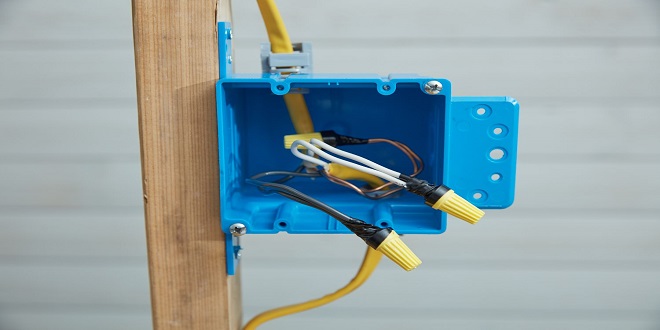Splicing Wires: Do it Yourself

For an electrician to splice wires is something common, but perhaps because they do not have the necessary knowledge of how to splice wires and what types of splices, they end up failing to perform these services, as their splices no longer offer safety and efficiency. Learn how to make a splice correctly, what types of splices and types of electrical connectors.
A poorly made splice can bring major problems to the circuit, being one of the main causes of defects within an installation, so the splice must be carried out in the best possible way.
One of the factors that influence the efficiency of an electrical installation is the splices, if poorly insulated or done incorrectly, it can cause significant losses due to dissipated heat.
It is important to understand that there are two types of cables, rigid and flexible. The rigid cable consists of only one copper wire (in some cases aluminum). The flexible cable is formed by several copper wires, also in some cases it can be aluminum, in compensation these wires are much thinner.
There are several types of cables and each one has specific methods for splicing. The splice will never replace a cast cable, that is, without splices, as its mechanical characteristics will never be the same, but if the splice is well executed, these differences can be minimized to the maximum.
Tips for making a safe and quality splice:
Some precautions must be taken when performing a derivation amendment, one of them is when stripping the wires, never use a stylus, as it is an instrument that was not anufactured for this type of heavier work. The stiletto is a flexible instrument made of fragile materials, use a penknife if you don’t have the appropriate tool.
To give a better fixation of the conductors, finish and not get ends capable of damaging the insulation of the splices, use universal pliers.
When insulating the splice, pass the insulating tape several times until it is the same thickness as the wire itself. Deterioration or overheating of this splice can occur if insulation is carried out with a small amount of insulating tape.
Whenever possible, pass tin on the cables, like soldering the wire of electronic devices, as this is a process in which the tin penetrates the copper, ensuring that this splice is as close as possible to a fused cable and, in this way, will reduce the heating in this splice.
Making amendments step by step:
Derivation amendment:
The splicing in derivation is used to derive several conductors from another single conductor without cutting it, just stripping a part in the center of where you want to make this derivation, from there the splicing of the conductors will be made.
Hard Wire:
Strip a part of the conductor with the aid of stripping pliers or a penknife to make the conductor derivation, always keeping the two cables together involving each other. So that they are firm, finish the splice with the help of universal pliers.
Flexible Wire:
Also with the aid of stripping pliers or a knife stripping in the center of the conductor. Spread the conductor in the center so that it forms a “hole”, insert the second branch conductor in the center of the branch conductor.
Rotate the lead that was introduced into the lead to each side inside the main lead. To obtain a very strong splice, use universal pliers to secure the splice.
Link amendment:
The connection splice, also known as pigtail, is widely used to join two or more conductors in junction boxes. This type of splice is used on rigid conductors.
Hard Wire:
Leave the two wires bare, both forming a 90° angle and use universal pliers to hold the wires together. Use the other hand to rotate the live part, maintaining the 90° angle until you get a twist.
At the end of the splice, use another universal pliers to keep turning, so you don’t get hurt and keep the splice tight. To finalize the finish, just bend the sharp ends that remained from the splice, to avoid perforating the insulation. After that, just do the soldering and perform the insulation.
Extension amendment:
This type of splicing, as the name implies, is used to increase the length of conductors, with excellent mechanical resistance.
Hard Wire:
Remove the insulation towards the ends and cross the ends of the conductors, forming a 90° angle, then twist one conductor over the other in the opposite direction. Complete the twisting of the ends with the help of one or two pliers so that the ends are completely wound and tight on the conductor.





